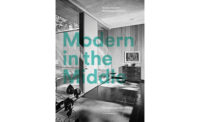Going off the grid is often easier said than done, since electricity, water, and gas may sound like shackles only until you don’t have them. Yet the remote retreats offered in this book involve moderate to limited compromises in comfort and considerable design excellence.
With his selection, UK-based Dominic Bradbury argues that creating houses without the standard infrastructure “ requires a degree of imagination and confidence. But, he adds, it makes “everyday living in remote and rural parts of the world a rewarding and tempting reality.”
There is an element of the rustic to many of these houses, yet none is a drafty shack. Many are built with a deliberately light footprint, often on pilotis, and some are conceived with easy relocation in mind. Local and reused timber is common, components become as demotic as plywood, and some resemble time-honored backwoods archetypes like the A-frame. Steel is a common component, and many of these dwellings are modular. Nevertheless, a small number have a more permanent character, with a few built of stone: one, the Bolton Residence in Quebec, by the firm _naturehumaine Architecture & Design, sits on a concrete plinth.
Oil lamps or fireplaces provide light and heat in a few of the houses. Most rely on a mixture of the “deeply familiar and reassuringly lowtech,” from devices burning wood or private wells and harvested rainwater to more innovative technology, such as photovoltaics and wind and hydroelectric turbines. Some of them are only suited for use during certain seasons, while others can function year-round.
Several of the houses are distinctly modern. There’s a Miesian pavilion in Arbrå, Sweden, conceived by Delin Arkitektkontor, consisting mainly of glass. One home in Mudgee, New South Wales, by Casey Brown Architecture, features adjustable corrugated copper canopies reminiscent of Paul Rudolph’s 1952 Walker Guest House in Sarasota, Florida. Some geometries are rigid, while others are purposefully irregular. One craggy roof in Okstindan, Norway, created by Jarmund/Vigsnæs was molded in response to a study of snowdrift patterns at the site.
Adjustable elements are frequent, including doors that can be opened to create breezeways. The Japanese-styled Premaydena House in Tasmania, designed by Misho + Associates, features an inner core surrounded by a veranda that can be enclosed by sliding ochre-colored steel panels, providing either views and breezes or comprehensive insulation. It also includes a solar-powered roof whose eaves can raise up to open the structure to the skies.
Some of these houses are within a modest drive of the grid, but others are genuinely out of reach. One has access only by foot or on horseback, another by foot or helicopter. Though there’s not much of an indication of cost here, a few of the dwellings would seem to be affordable only to the helicopter demographic, while others are composed of common enough materials that the pastoralist of more modest means might stand a chance of owning one. In any case, the author’s sustainable credo that “any kind of construction should carry with it a degree of responsibility” is well borne out, and his selection demonstrates that this ethos requires no diminution of quality.







Post a comment to this article
Report Abusive Comment